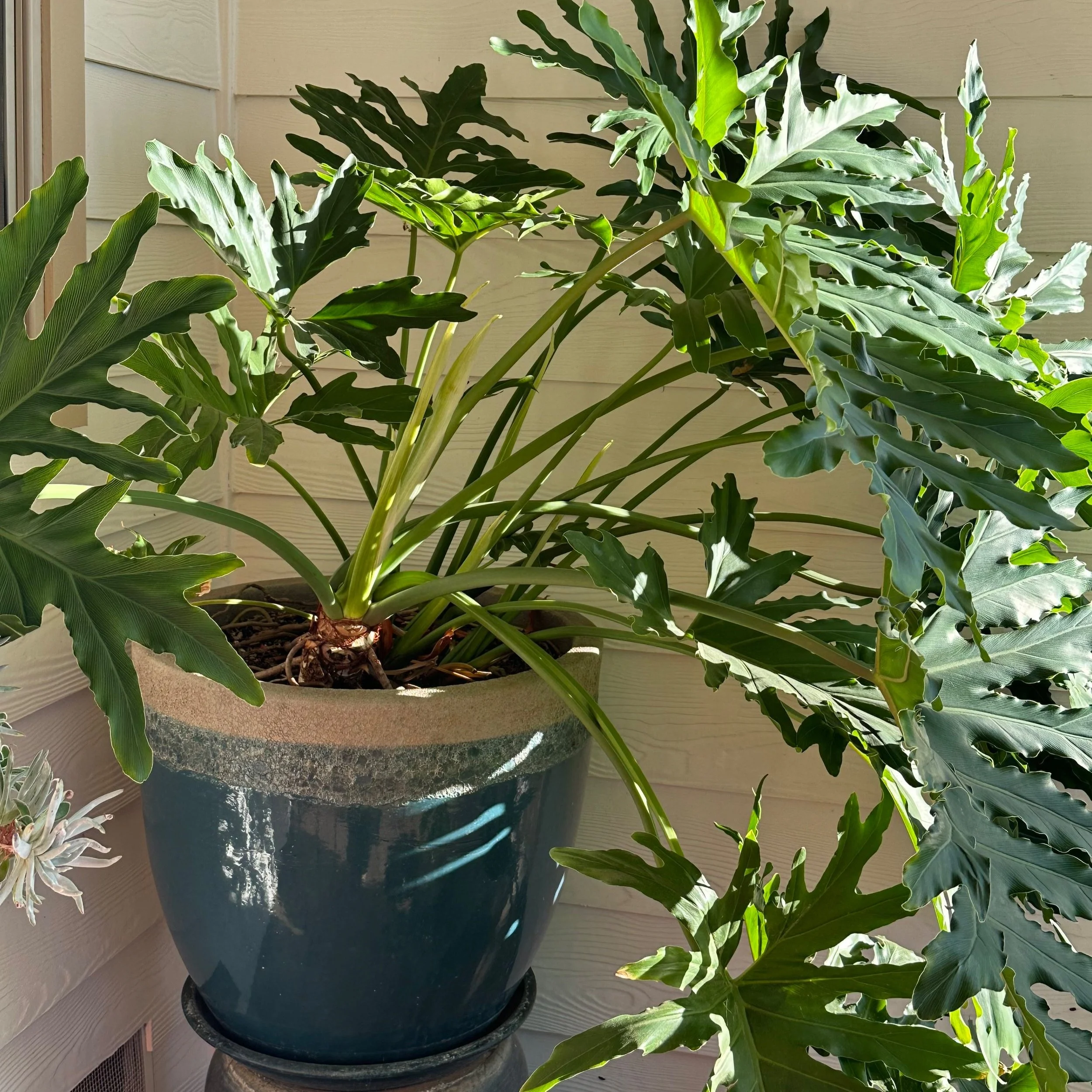Selecting a Pot – Outdoor Plants
Selecting a Pot – Outdoor Plants
Selecting an appropriate pot for an outdoor plant can be perplexing. We find many people underestimate the size of container they need and are inclined to select a pot that looks good with the plant at its current size. Keep in mind the size of that new plant on your cart may not have any relationship to its size at maturity. A plant that is grown in a pot that is too small will become root bound and stunted and is likely to fail. In general, it is better to overestimate the size of pot and amount of soil your plant needs rather than underestimate. In order for your outdoor plants to thrive, select a container considering the following:
Size of plant at maturity
Speed at which it grows
Irrigation needs
Stability
Mobility
Size of plant at maturity: This a very important consideration which is often overlooked. A plant’s appearance at the time of purchase can be misleading. The first or second line of our plant label will specify the dimensions of the plant at maturity. Plants can all look similar when they are in 4” or 1 gallon containers, but they can have vastly different sizes at maturity. Some will remain 6” tall while others may reach up to 10’ or much more. When selecting both the plant and pot, envision that naturally, the root structure of the plant is at a minimum as large as the above ground mass of the plant. However, it is also true that plants in containers tend to remain smaller than in the ground, and we can influence the growing environment through watering and fertilization. We suggest that if you were growing a plant that would reach 5’ in height and width, you would want a pot that was 21-24” diameter and 2 feet tall. Perennials that can range from 2-3’ need a 14-18” diameter pot.
Speed at which it grows: The first two considerations from above go hand in hand and each are equally important. Many plants (for example, Salvia, Hollyhocks, most perennials, herbs, and vegetables) will reach full mature dimensions during the first growing season. For those types of plants, it is advised you purchase a pot aligned with its full size. Others, such as many trees, can take up to 10 years to reach their full height. You might elect to select a pot appropriate for the first three years and then plan to transplant to a larger pot at that time.
Irrigation Needs: Small pots tend to dry out very fast, especially depending upon the exposure they receive. Smaller pots (up to 8-10”) are better suited for succulents which do not require frequent water. Pots that are 10-16” are better suited to herbs, vegetables, smaller growing perennials, and annuals. This sized pot and will need more frequent irrigation. Larger containers are able to retain the moisture longer due to the increased amount of soil they hold. All containers, despite the drought tolerant designation on a plant, need to be watered. The term drought tolerant only applies to established plants (typically after a year or more) that are in the ground, have a fully developed root system and can locate water on their own. That condition does not apply to plants in containers, though a drought tolerant plant will need less frequent but still consistent watering. Once a plant has been stressed from lack of water, they may not recover.
Stability: Shape and volume determine whether a container is stable enough to keep the plant from tipping over in wind. Square, rectangular and cylinder pots are the most stable. Traditional cone, round and egg-shaped pots tend to tip over more easily, especially if they have a tall plant or are located in windy conditions. Small containers with tall plants are especially susceptible to tipping over.
Mobility: When selecting the material of the container, carefully consider the need to move the pot in the future. Fiberglass containers as well as resin and plastic are light, come in a variety of colors and styles and are easy to move. Wood and galvanized metal are popular choices as well. Terracotta, ceramic, stone and concrete can be lovely but are very difficult to move once positioned. You might consider plant dollies/caddies that are on rollers to facilitate movement.






